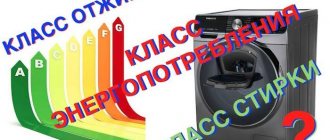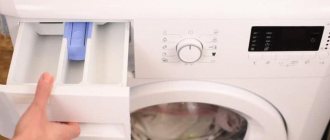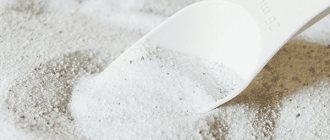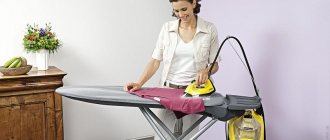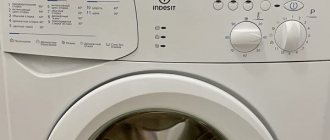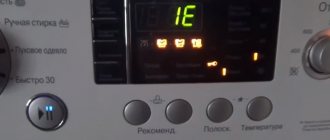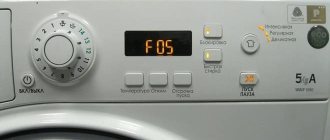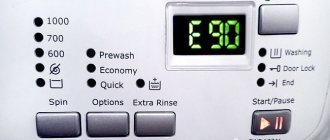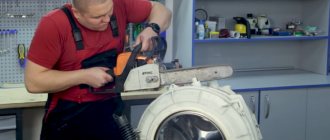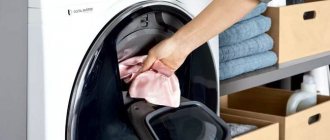Every person has a lot of household appliances in their home, at least a refrigerator or a washing machine, and everyone knows that these household appliances consume a lot of expensive electricity. Based on this, everyone wants to find a less energy-consuming device, the varieties of which are not so easy to understand.
When you come to the store to make a purchase, the specified energy consumption class of washing machines, which is advertised by sellers, will not say anything at all, especially to a person ignorant of modern technical characteristics. What does the class mean and each sticker with letters and numbers that you can find on such a household appliance as a washing machine.
Introduction to the topic
If you remember your school physics lessons, you will probably be familiar with the unit of power measurement - watt (W) or kilowatt (kW). So, this same power has a direct impact on your monthly electricity costs.
In simple words, the greater the power of your machine or any other frequently used household appliance, the more electricity they consume, therefore, this is reflected in the cost of housing and communal services.
Modern technologies do not stand still and now you can save money with a future perspective when buying a washing machine. To do this, you need to pay attention to the energy consumption class, which should not be lower than A. For energy consumption, the most economical devices are those that have a sticker on the body marked in the form of the letter “A”.
Numerous appliance manufacturers are trying not to lose face and are constantly working to ensure that the power consumption of household appliances is as low as possible. Of course, this cannot but affect the cost of the devices, but subsequently everyone will still feel the difference and, accordingly, the savings.
Water heaters, boilers and boilers
Energy-producing equipment such as boilers, various water heaters and boilers are divided into classes according to the seasonal energy efficiency coefficient of the heating device. This indicator is calculated by dividing the amount of electricity spent on heating (for a certain season) by the annual energy consumption that is needed to satisfy this demand, expressed as a percentage. Thus, the seasonal coefficient for a class A water heater is in the range from 90% to 98%, for class A+ equipment this number will be 98%-125%.
Another coefficient for determining the class of water heating devices is the energy efficiency of water heating. This important parameter is determined as follows. The ratio is calculated between the amount of electricity that was expended by the water heating device to heat the water and the percentage of the total energy consumption.
What is energy efficiency
Everyone knows that the cost of monthly utility bills directly depends on the electricity consumption of the appliances in your home. Based on this, everyone tries to use the most economical technology.
But speaking about efficiency, it is worth taking into account several of its indicators, which are called energy saving and energy efficiency.
These two concepts are similar, but at the same time they differ, just like the energy consumption classes among themselves. Let's take an ordinary 100-watt light bulb as an example. If you turn on the light in the room only when necessary, in the evening, when it gets dark, and turn it off when you leave the room, then this will be called energy saving. You purposefully consume less electricity to save money and save it.
To understand energy efficiency, we will also take a light bulb, but not a 100-watt incandescent one, but an energy-saving one with a power of 20 watts.
In this case, you do not take any special actions to save, but simply purchased a less energy-consuming product, but whose efficiency is several times higher than standard indicators.
This example can be applied to any technology, for example, a class of machines, for washing machines produced 10 years ago and for today's ones. Of course, the latter are more energy efficient than their predecessors, which in turn assigns them certain energy consumption classes, which also affect the price.
TVs
A TV receives a certain level of energy efficiency class as the ratio of current (power) consumption to the size of the TV screen. It is noteworthy that A+ class TVs appeared only a few years ago, and now the most energy efficient TV devices are those with A++ class (for example, TFT models). At the same time, “A+++”-class TVs will soon be actively produced.
The reference power for a TV is determined by the formula:
Pref = Pbasic + A * 4.3224, where
- Pref – TV power, which is expressed in W/dm2 (Watt per square decimeter);
- Pbasic – basic coefficient (taken from the table of TV types, in which for a TV with 1 tuner Pbasic = 20 W, for a TV with hard drives 24 W, for a TV with 2 or more receivers or tuners 24 W, for a TV having both disks and several receivers 28 W, for a monitor 15 W);
- A is the screen area, expressed in dm.
Electrical consumption classes of washing machines
So, before you understand which energy consumption class is better, you need to understand what this consumption means. As mentioned above, the power of each household appliance is measured in watts or kilowatts.
Therefore, if you want to know how much energy resource consumption is consumed in a certain time, you can easily calculate it. Typically the power of the machine is from 1.5 to 2.5 kW, we will take the average value, 2,000 W (2 kW). The duration of one wash can also vary, but on average it is 40 minutes (40/60 = 0.666667 hours).
Based on these data, it is easy to calculate energy consumption; to do this, we simply multiply the power and time indicator:
- For one wash – 2 kW x 0.666667 h = 1.3 kW∙h;
- For a month of use (for example, 6 hours) – 2 kW x 6 hours = 12 kW∙h.
Knowing the approximate consumption of your household appliance, the question certainly arises: what is the class of this same energy consumption? Currently, stickers that are glued to the body of household appliances are designed to notify people about energy consumption and, in turn, about the belonging to a certain class of almost any device that consumes electricity.
The letters themselves indicate the energy efficiency calculated by us above. These same letters are graded from G to A, respectively from the most energy-consuming to the most economical. In the present, if classes are given from C to A, then these are the best devices.
This alphabetical gradation applies to all equipment that consumes electricity. But in turn, the calculation of energy efficiency for each will be different. For example, for Class A washing machines and microwave ovens of the same class.
Classes A, B, C…
05.05.2005
Let's start our story about energy consumption classes and functional efficiency of household appliances with an amusing incident. A woman called the service department of one of the large manufacturing companies about some problem with her washing machine. Naturally, the company specialist began to find out the model of the product. To his question “What kind of washing machine do you have?” came the answer:
- AAA.
— ???
- Well, on the front panel it says: AAA.
I had to explain to the lady that these are classes of energy consumption, washing efficiency and spin efficiency, respectively, and not the machine model. What are these classes and what do they talk about? To understand this, we first look at the so-called energy sticker of the washing machine, and then take a tour of the laboratory where the “class” of household appliances is determined.
In the last quarter of the twentieth century. Consumers of household appliances began to pay attention not only to the appearance and set of functions of the purchased product, but also to think about how much they will have to pay for the electricity that this product consumes. Over the years, in different countries of the world, special stickers have been developed that inform the consumer in advance, even in the store, about how efficient the device is in terms of energy consumption.
To unify this marking, in 1992 the European Community adopted Directive 92/75/EEC, which obligated European manufacturers of a number of types of household appliances to provide them with a single sticker, where the energy consumption class would be indicated in different colors and letters: from A - the most economical, to G - products with high energy consumption. Rules were established by which these classes were determined for each type of equipment, as well as additional characteristics included in the sticker (Fig. 1). EU standards establish the relationship between the level of energy consumption of a washing machine (measured in laboratory conditions) and the energy consumption class, which is assigned to it based on test results (Table 1).
Table 1
| Energy class | Electricity consumption, kWh/kg |
| A+ | < 0,17 |
| A | 0,17…0,19 |
| B | 0,19…0,23 |
| C | 0,23…0,27 |
| D | 0,27…0,31 |
| E | 0,31…0,35 |
| F | 0,35…0,39 |
| G | > 0,39 |
Rice. 1. Energy sticker of the washing machine: 1 - type of product (washing machine); 2 - manufacturer or brand; 3 - model; 4 - energy consumption class from A to G; 5 - electricity consumption (per cycle of washing cotton fabric at 600C), kWh. It is also indicated here that the actual energy consumption depends on the operating conditions of the product; 6 - washing efficiency class from A to G; 7 — spin efficiency class from A to G; 8 — maximum drum rotation speed during spinning, rpm; 9 — nominal drum load with linen (cotton), kg; 10 — water consumption per wash cycle, l; 11 — noise level during washing, dB(A); 12 — noise level during spinning, dB(A). The last two lines are optional and are only required for very noisy products, which is rare these days.
Just a couple of years ago, the highest line in this table was class A, which was assigned to washing machines with an energy consumption of less than 0.19 kWh/kg. But in 2002, leading European appliance manufacturers agreed to introduce a higher A+ class, thereby “raising the bar” and setting a new incentive for improving washing machines. And that is to say, class A today will not surprise anyone; this milestone has already been reached by many car models. Note that the energy sticker shows energy consumption (kWh) and laundry load (kg), and the table that determines energy consumption classes shows the value kWh/kg, that is, energy consumption per kilogram of laundry loaded into the machine. It is very simple to move from one value to another - we divide the number in line 5 of the sticker by the number in line 9. Having done this simple exercise, it is easy to verify that this Hansa washing machine consumes 0.19 kWh per kilogram of load, and therefore, according to table 1 , its energy consumption corresponds to class A.
The spin efficiency class is also determined by direct measurements. In table Figure 2 shows the dependence of the laundry spin efficiency class on the spin efficiency index, which is defined as the weight of water remaining in the fabric after spinning to the weight of dry fabric. Everything is clear here: we weigh the laundry after spinning, then dry it completely and weigh it again. We subtract the weight of dry laundry from the weight of wet laundry - we get the weight of the water remaining in the laundry after spinning. Now we divide the weight of water by the weight of dry laundry - we get the spin efficiency. In general, a problem for elementary school.
Table 2
| Spin efficiency class | Spin efficiency index, % |
| A | < 45 |
| B | 45…54 |
| C | 54…63 |
| D | 63…72 |
| E | 72…81 |
| F | 81…90 |
| G | > 90 |
As for another class of washing machine - the class of washing efficiency (or washability), it is determined by comparing the performance of a given machine to the performance of a certain reference machine.
In table Figure 3 shows the dependence of the washing efficiency class on the so-called washing efficiency index, which is defined as the ratio of the degree of washability of a given machine to the degree of washability in a reference washing machine. What is a reference machine and how is washability measured?
Table 3
| Washing efficiency class | Washing efficiency index |
| A | > 1,03 |
| B | 1,03…1,00 |
| C | 1,00…0,97 |
| D | 0,97…0,94 |
| E | 0,94…0,91 |
| F | 0,91…0,88 |
| G | < 0,88 |
To answer these questions, we went to the research and resource testing department of the Rostest-Moscow Federal State Institution.
Do not enter: tests are underway
“Here it is, our pride” - the head of the department, Igor Nikolaevich Chekryzhov, shows us the standard Wascator machine produced. You can really admire the reference machine: installed on a special concrete pedestal, it only resembles an ordinary household machine in outline (Fig. 2). But the dimensions and even the fact that it itself has become a reference car involuntarily evokes respect. And the price makes you take your hat off: 20 thousand euros is a whole truckload of ordinary washing machines.
Rice. 2. Wascator reference washing machine
Before starting work, a magnetic card with a standard washing program written on it that complies with EU standards is inserted into the slot on the control panel of the Wascator machine; The machine does not allow any amateur interference in the course of this program. Before each test, a thorough calibration of the machine is carried out - during its execution, you can’t not only, God forbid, lean against the machine, but even put a sheet of paper on its body: the ultra-precise mechanics of the machine will immediately feel this.
But the reproducibility of the results is truly unique. Laboratory employee Alexey Melikhov shows us the test report: the records match four significant figures, this is an accuracy of hundredths of a percent! “The Wascator is a benchmark not because it washes better than all other machines. It washes like a regular machine, and its spin speed is not a record one, but only 800 rpm,” explains Alexey, “but the Wascator machine washes the same way every time, all the results of its work are perfectly reproduced. It is a standard because, unlike the machine under test, when operated simultaneously with it, it always produces a stable result, with which the result shown by another machine can always be correctly compared. The Wascator's uniquely low spread makes it a benchmark for other machines." By the way, on the day when we were in the Rostest-Moscow research and resource testing laboratory, they were testing two washing machines - Miele and Whirlpool. Rostest-Moscow regularly conducts such tests as part of a long-term cooperation program with the German institute Stiftung Warentest.
But let’s continue our acquaintance with the unique equipment of the testing laboratory. A bulky tank is visible to the left of the reference machine: this is a water treatment plant
(Fig. 3). The test conditions require that the water used for washing have strictly defined parameters: temperature 15±2°C, carbonate hardness 2.5±0.2 mmol/l. The water treatment plant ensures that these parameters are maintained during testing.
Rice. 3. Water treatment plant
The Wascator is always loaded with a 5kg reference load and, unlike household washing machines, it weighs it in a very real sense - the reference unit is equipped with a load weighing system. Other initial data of the machine are also unchanged: washing lasts exactly 79 minutes, the water during washing is heated to 60°C (remember that this condition is stipulated in the energy sticker of the washing machine, or rather, in the EU directives).
Exactly 180 g of washing powder is poured into the reference machine, and the composition of this powder is also strictly specified: it is a mixture of three components - the main detergent “A*”, soda and bleach. When preparing a portion of the powder, each of the components is weighed on an electronic scale with an accuracy of hundredths of a gram (Fig. 4), and the finished mixture can be stored for no more than one week. In such a serious matter as testing washing machines, there are no trifles. Water - with strictly regulated parameters, powder - too. What exactly are we going to wash?
Rice. 4. Preparation of washing powder for testing
Preparing a laundry item is a whole science. After all, before you wash something in a standard way, this “something” must be contaminated in a standard way, otherwise you can compare the washing results of different machines. It turns out that there are companies (EMPA in Switzerland and WFK in Germany) that produce standard stains: they are strips of fabric (strips) of five sequentially sewn squares measuring 15x15 cm - the first square is clean, the second is contaminated with soot and mineral oil, the third is with blood , the fourth is cocoa with milk, the fifth square is contaminated with red wine. The strips are loaded into the test machine along with a load of cotton fabric. If 5 kg of laundry is washed, then five strips are placed in the drum, if 6 kg of laundry - then six. As you may already guess, the underwear for testing also undergoes serious preparation. It must undergo preliminary “aging”. The reference linen set consists of cotton sheets, pillowcases and towels. This set consists of four parts. The first part of the set is new, the second has been stretched 20 times, the third 40 times, the fourth 60 times. After the fourth part has been washed 80 times, it is removed from the kit and replaced with a new one.
In the intervals between tests, the laundry is conditioned for at least 24 hours in a special room with a strictly defined climate: temperature 20°C, humidity 65%. A humidifier operates to maintain a constant level of humidity in the room. But finally, the laundry with the standard soiled strips is ready to be loaded into the machine (Fig. 5). Laying it in the drum is also done according to certain rules: if, say, one towel is folded forward, then the next one is folded towards the hatch. Laboratory employee Lyudmila Maslennikova performs this operation very carefully (Fig. 6).
Rice. 5. The laundry is ready to be loaded into the drum
Rice. 6. Laundry is loaded into the reference machine
But finally, the drum is full. Wascator is ready to go. This moment is somewhat reminiscent of an episode from some movie about submariners, when the hatches are battened down and the boat is ready to dive. Next to the reference car, its everyday sisters being tested in the laboratory seem like toy cars (Fig. 7).
Rice. 7. Wascator and household washing machines being tested in the laboratory
The energy consumption of each machine is directly measured continuously (Fig. 8). When the machines finish working and its integral value is calculated, it will become clear what color the stripe should be on the energy sticker of the machine. But to determine the washability class, you will have to work with the laundry removed from the drum. First, the strips are separated from the textile. Then the textiles are additionally wrung out in a centrifuge, and by analyzing the composition of the water squeezed out of it, it is determined how well the machine rinsed the laundry. “Rinse class” is not included in the list of required characteristics of a washing machine, although it is an important characteristic: the presence of washing powder residues in the fabric can cause discomfort in people prone to allergies.
Rice. 8. Measuring the energy consumption of the machine under test
Next, strips of reference-contaminated fabric are dried and then ironed with an ironing machine (Fig. 9). And now comes the “moment of truth”: the samples are examined with a spectrophotometer - an optical device that can measure their reflectance, that is, determine how much lighter each square of the strip has become after washing (Fig. 10). The human eye cannot distinguish, say, washing efficiency class A from class B. This can only be done with the help of a measuring system, which, in addition to a spectrophotometer, includes a computer with the appropriate software. The total cost of such a complex is slightly inferior to the cost of the standard Wascator washing machine. We hope that the reader has an idea of the amount of research that needs to be done by the testing laboratory staff so that on the front panel of the washing machine there are, with good reason, letters corresponding to the functional characteristics of the sample being tested.
Rice. 9. Ironing strips of reference-contaminated fabric after washing
Rice. 10. Spectrophotometer: a device for determining the degree of washability of fabric
The editors thank the staff of the research and resource testing department and the management of the Federal State Institution "Rostest-Moscow" represented by its General Director V.N. Bas for assistance in the preparation of this material.
<
Energy efficiency label
The difference shown in the calculations is directly related to the purpose and type of the device itself. For example, a refrigerator with high energy consumption can still belong to class A, while at the same time, just like an electric kettle can be energy efficient and also have this class. Energy efficiency indicators are calculated for different categories of electrical appliances, but the gradation of classes remains the same.
The class marking remains unchanged and has 7 levels, but for example, class B and class D (for one device) are distinguished by the energy efficiency index, which in turn is calculated based on the functionality of the device.
In order to calculate how much energy efficiency class for machines consumes, readings are taken not only of the electricity consumed, but also the maximum capacity, as well as functions (with or without a dryer).
Vacuum cleaners
Vacuum cleaners also had their own energy efficiency class until 2022, which was determined by a combination of two indicators: separately for cleaning hard floor surfaces and for cleaning carpets. Not only current consumption is taken into account, but also the presence and amount of dust that remains in the air of the newly cleaned room. By the way, electricity consumption is indicated based on fifty cleanings of a room with an area of 87 square meters.
